 |
LIFE IN THE GOBI |
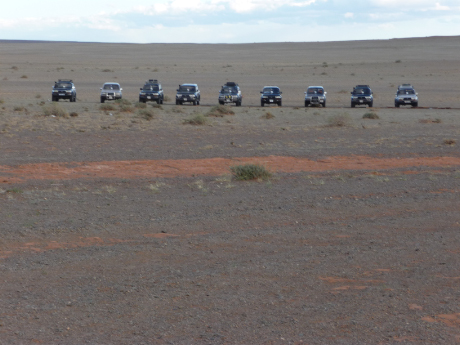 |
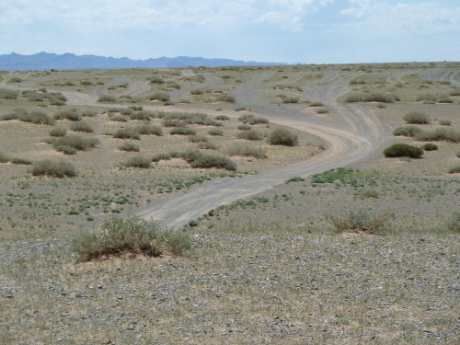 |
|
| Our transportation in the Gobi was by 9 Land Rovers. They always travelled in order and lined up when they parked. Being in #9 was chancy, though--once it broke down and none of the other eight realized it. They spent 90 minutes waiting for help while the rest of us went merrily on.
|
Some of the roads in the Gobi were dirt tracks that seemed to begin and end almost at random. | |
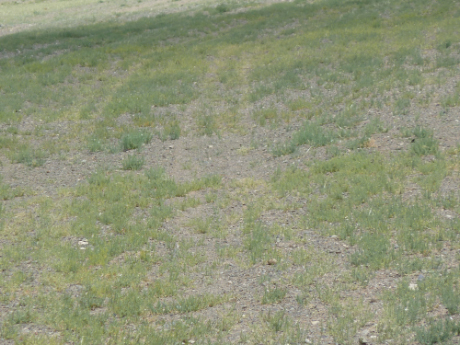 |
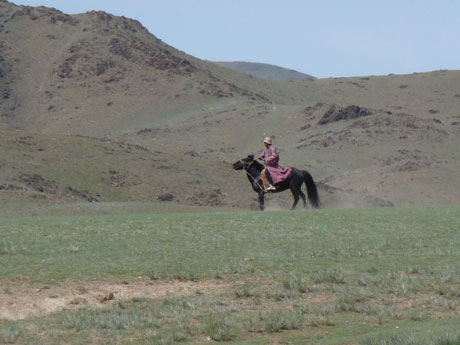 |
|
| A lot were barely visible as tracks, much less roads. We never figured out how the drivers know where to go in what was essentially a trackless wilderness.
|
We often saw gers and sometimes we saw a sight like this--he could have stepped out of almost any period in Mongolian history. | |
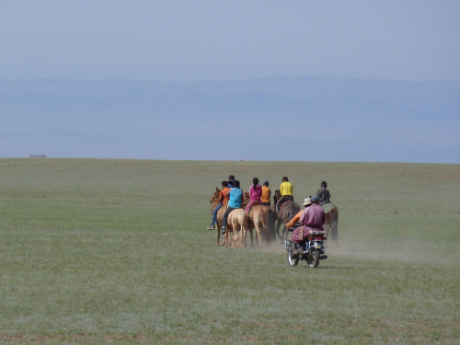 |
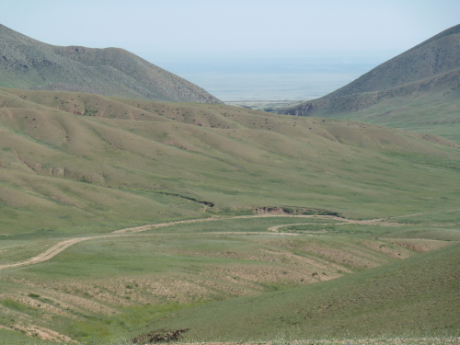 |
|
| The kids were running their horses, being urged on by an adult on a motorbike--this is how horses are trained for the Naadam Races (scheduled for a few days later).
|
A lot of the time, though, what we saw was a huge open country. | |
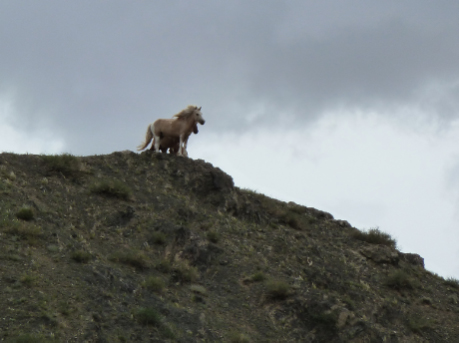 |
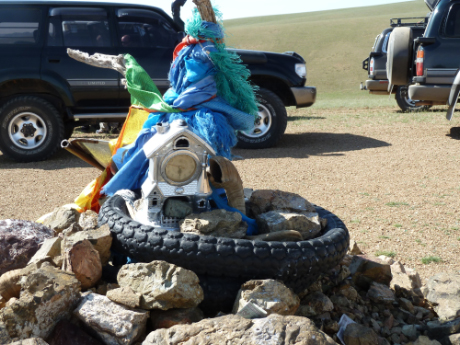 |
|
| You never knew who might be watching you. . .
|
Another ovoo with a particularly unusual set of offerings. | |
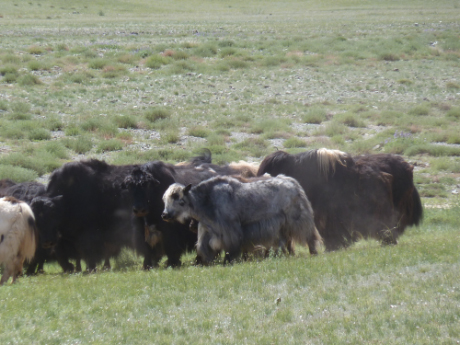 |
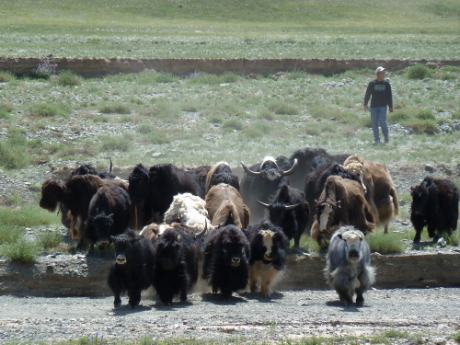 |
|
| Yaks! It is actually fairly rare to see yaks around--most of them have interbred with cattle and can't be distinguished from them. But a few families still raise true yaks for milk, hides, and meat.
|
||
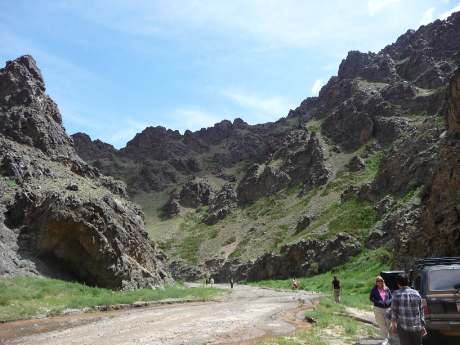 |
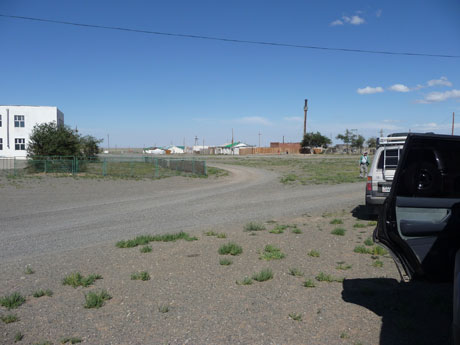 |
|
| Rest stops were always a challenge--of course there were no toilets along the way. Bushes and rocks were in short supply as well. We usually stopped where there was a curve in the road or a hill--guys went one direction, women the other. But what the facilities lacked in privacy they certainly made up for in scenery.
|
We saw almost no towns, although the Soviets had built a number of them to house schools, hospitals, gas stations, etc. We stopped here for gas and Ider suddenly saw his vehicle driving off without him. He had to bum a ride with us to catch up. Leaving a guest behind is bad--is leaving the guide behind better or worse? | |
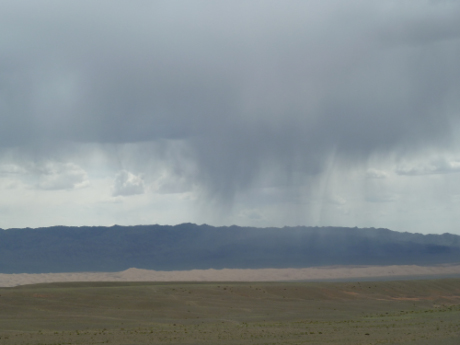 |
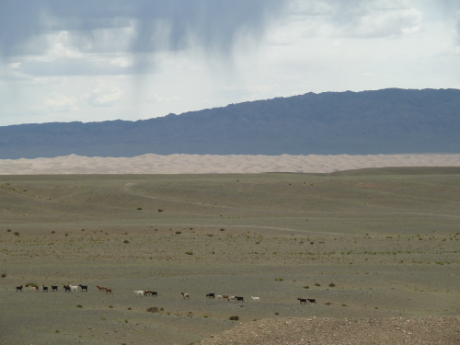 |
|
| Virga in the Gobi. We had learned years ago from a local weathercaster, Loren Nancarrow, that virga is rain that evaporates before it hits the ground, but we had never actually seen it. So here it was.
|
||
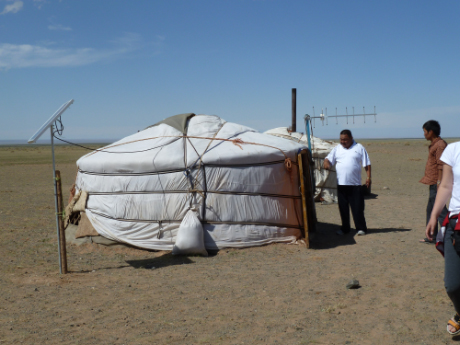 |
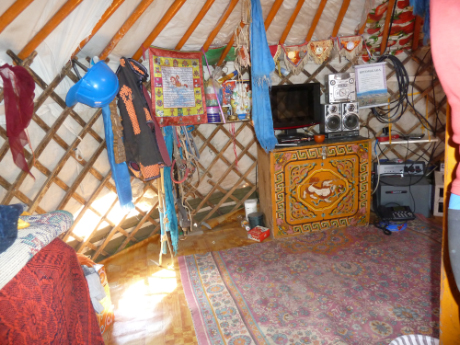 |
|
| We stopped to visit another family. This ger was smaller than the other because the family was travelling--kind of a mobile hotel room. Like our gers at camp, it was weighted down against the wind.
|
Inside, however, it was just as comfortable as the other, complete with boom box and TV. And I really admired the painted chest. | |
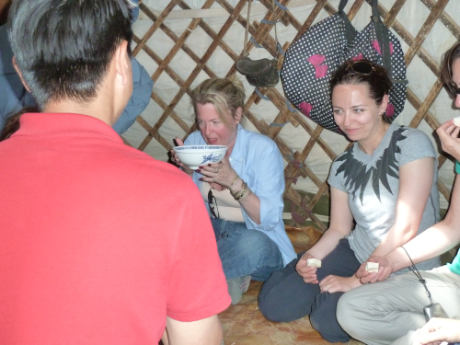 |
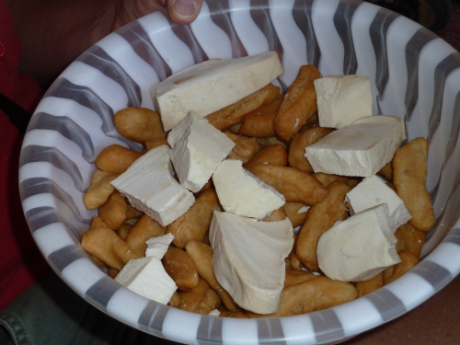 |
|
| They gave us airag (fermented milk) to drink and this time I liked it better--it didn't have the stong smell of yeast that the other had.
|
They also gave us goat curd (like a sharp cheese) and fried dough. This curd was fresh (in July) but most of what they make they dry (we saw trays on top of the gers) and it is a staple food in the winter. | |
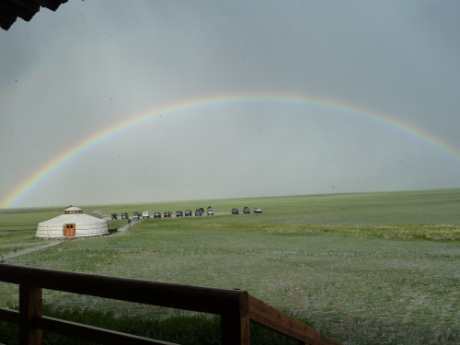 |
||
| VIDEO (:53): One evening we saw a storm moving towards us. It turned out to be a fierce hailstorm - so there we were, sitting in the camp bar in the Gobi Desert watching a downpour of hail.
|
At the end of the storm there was a great rainbow. | |
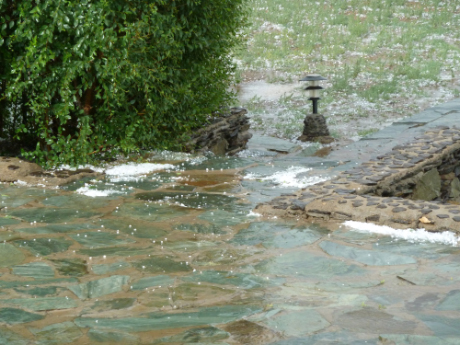 |
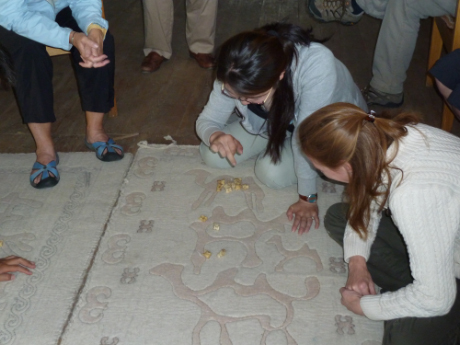 |
|
| The ground was covered in rain and hail--and since gers have an opening in the top where the stove chimney goes out, we were lucky that Chuck was still in the ger to move all of our belongings off the floor.
|
When the storm was over Ider and Balor taught us some Mongolian games played with sheeps' ankle bones. | |
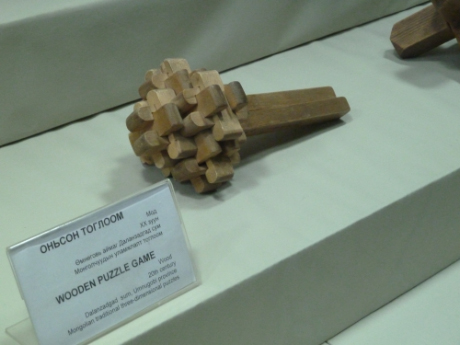 |
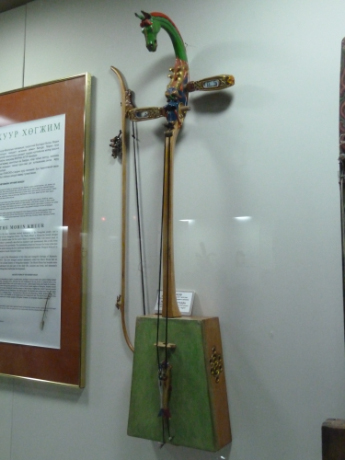 |
|
| Mongolians also make intricate wooden puzzles of a sort that I remember having as a child. These puzzles, and the games they taught us, take a long time to finish. As Ider said, the evenings in winter are very long and mostly what families do is play games.
|
This is the national instrument of Mongolia and a UNESCO Cultural Artifact--the 2-string horsehead fiddle. This one is in the National Museum but they are still widely played in the country. | |
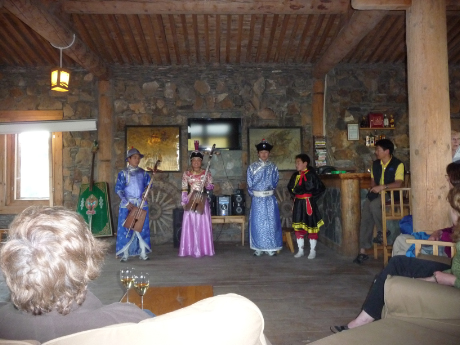 |
||
VIDEO (1:35): A group of high-school students brought their traditional instruments and costumes to do a show for us.
|
||

|

|
